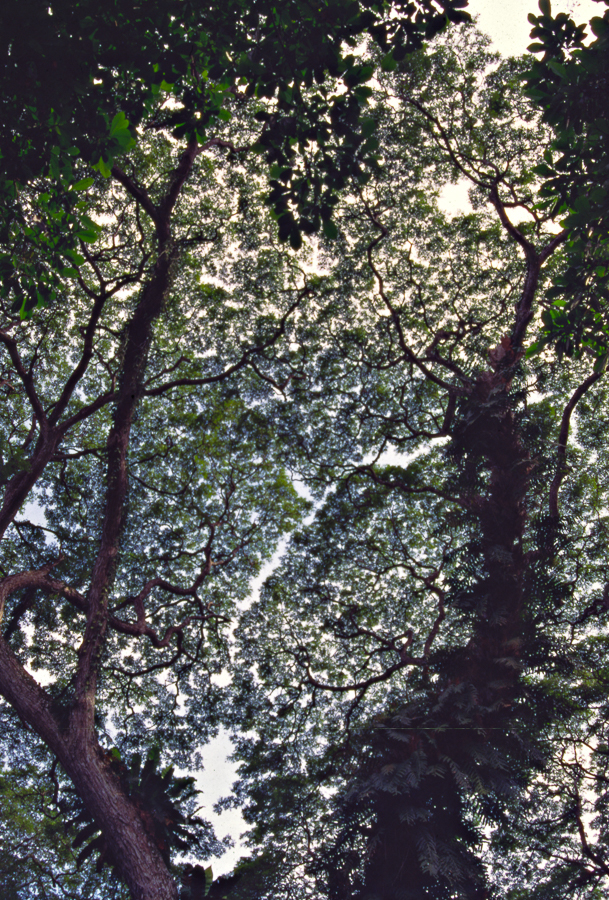Canopy shyness is the tendency of trees to reduce competition between adjacent trees by maintaining a space between branches. It is easy to see in tropical forest canopies. which tend to be flatter than temperate canopies. Looking up into a tropical forest canopy (in this case a lowland forest in Peninsular Malaysia), you can see the separation between two adjacent trees.
How does it work? This is a function of the exquisite ability of trees to detect and evaluate light. As sessile organisms, unable to wander in search of resources, trees have been selected to be very efficient at making maximum use of available light for photosynthesis. This is especially important in tropical moist forests, where other environmental factors, such as water, are less limiting.
The light responses in trees are not due to differences in photosynthesis. Trees, like all plants, have evolved a highly sophisticated system for measuring light and telling time through the conversion of phytochrome between two different states. In the case of canopy shyness, phytochrome is used to measure the ratio of red light to far red light (R/FR). Sunlight is rich in R and FR, but light passing through a canopy or reflecting off leaves, has a low R/FR ratio: the red light is absorbed by leaves, but FR is less absorbed. Phytochrome is constantly monitoring the R/FR ratio. In the case of canopy shyness, the phytochrome response serves as a signal: “Hey, there’s another plant nearby, let’s slow down growth in that direction.”
The result is what you see here. The exquisite sensitivity of leaves to changes in the quality of light creates gaps between branches.
